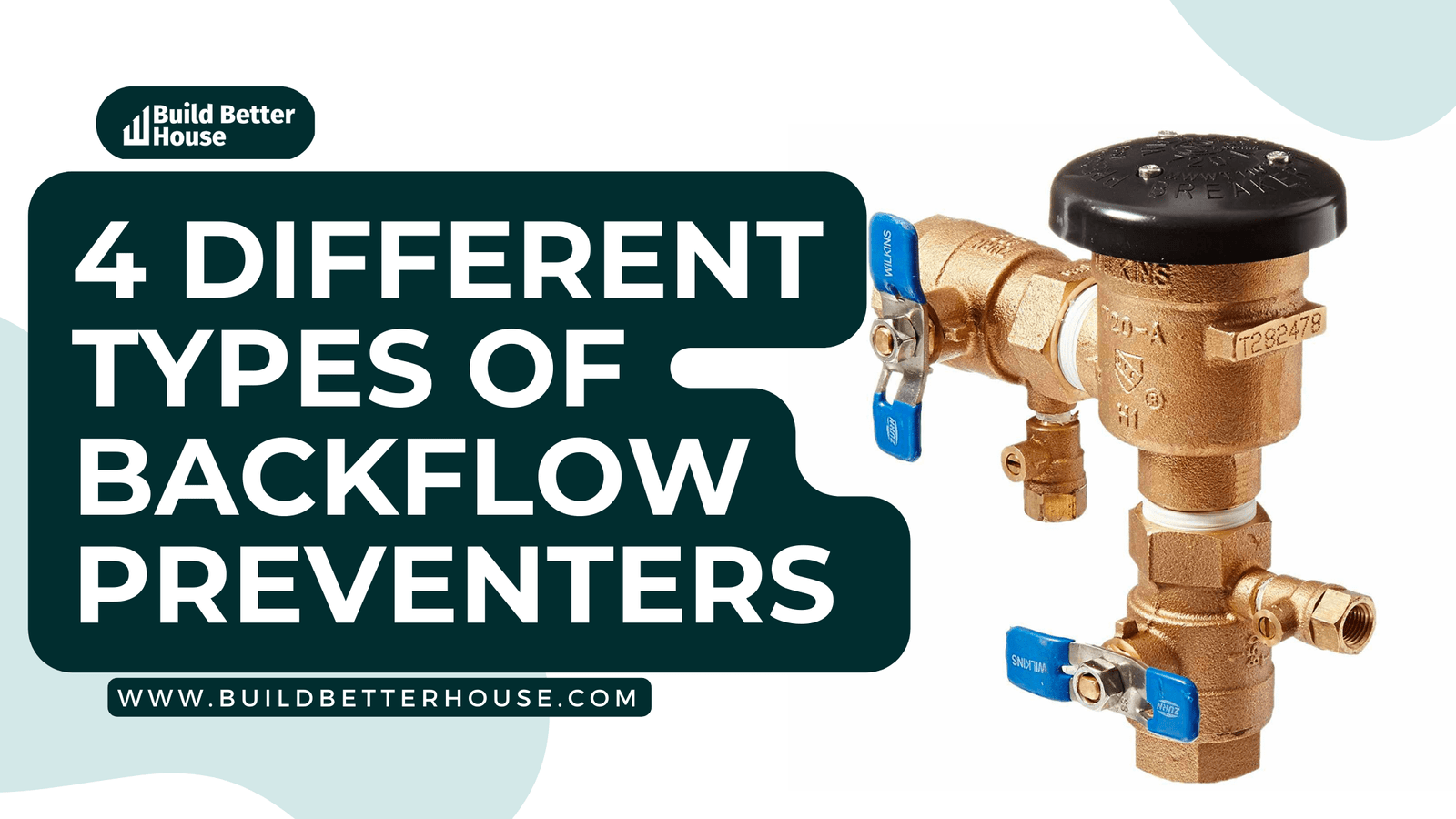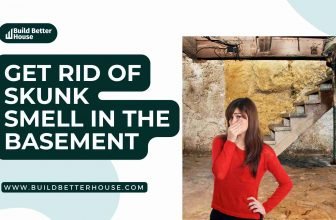4 Types Of Backflow Preventers And Which One Do You Need

Backflow preventers are vital components in any plumbing system. Yet, many people need to learn the ins and outs of this critical device used in plumbing systems to prevent contaminated water from entering the main water supply. This guide will provide a comprehensive overview of the different types of backflow preventers, their features and benefits, and how to install and maintain them.
By the end of this article, you will better understand backflow prevention and be able to make an informed decision about the types of backflow preventers among which one is best for you.
Types of Backflow preventers
Backflow prevention devices and backflow prevention assemblies are the two main types of backflow preventers.
Backflow Preventers Devices
Backflow prevention devices are the types of backflow preventers that prevent the flow in a plumbing system from switching directions. However, they cannot be tested once installed because they need test valves, inlet valve shutoffs, and outlet valve shutoffs.
Breaker for atmospheric vacuum
One type of backflow protection device is an atmospheric vacuum breaker, commonly referred to as an atmospheric antisiphon. Home hose bib vacuum breakers and frostproof wall hydrant faucets are typical examples.
However, the backflow prevention assemblies we examine below are generally more dependable & effective backflow preventers than an atmospheric vacuum breaker.
Instead of using water pressure to operate, an atmospheric vacuum breaker uses air pressure.
Types of backflow preventers: Assemblies
Backflow preventers are vital for any plumbing system, as they help protect against contaminants from entering the main water supply. Several types of backflow preventers are available, each designed for specific applications.
Pressure vacuum breakers
The pressure vacuum breaker (PVB) assembly is one of the most prevalent types of backflow preventers. Its design is simple, intuitive, reasonably priced to buy and operate, and simple to maintain and repair. A PVB assembly is made up of several separate components:
- A valve body with a pressure vacuum breaker and an intake shutdown valve
- Check valves that are spring-loaded and designed to close when the flow of water is stopped.
- Valves for testing
- A shutdown valve for the outflow
A PVB assembly also includes an air inlet valve, which opens when the internal system pressure exceeds the external force, avoiding back siphonage.
These assemblies are typically mounted vertically, at least a foot above the plumbing system’s highest downstream point.
One of the key downsides of PVB assemblies is that they are only sometimes suitable as a backpressure defense – they defend against back siphonage. As a result, consumers should avoid using these models when there is a high risk of backpressure in the plumbing system.
PVB assemblies cannot also prevent chemigation backflow. They are, however, intended for usage in both low- and high-risk situations.
Spill-resistant vacuum
PVBs may occasionally leak water, but consumers can avoid this by looking for spillproof types for indoor plumbing installations. Spill-resistant vacuum breakers (SVBs) solve the leaky assembly problem.
They are constructed similarly to PVBs, except they feature additional diaphragm seals to prevent water from pouring out of the air intake when the assembly becomes pressured.
Spill-resistant vacuum breakers, like ordinary PVBs, protect against back siphonage but not back pressure.
Double-check valves
Another popular option for backflow prevention in indoor and outdoor plumbing systems is a double-check valve assembly (DCVA). It is the most frequent type of subterranean or in-line backflow preventer.
An inlet shutoff valve and a valve body with two spring-loaded, independently working check valves, four test valves, and an output shutoff valve are typical components of a double-check valve.
A DCVA can install horizontally or vertically; an in-line installation means that the valve installs parallel to the piping, regardless of which way the piping runs.
A DCVA, unlike a PVB, does not need to be positioned at least a foot above the highest downstream point in the plumbing system. It does, however, necessitate a foot of clearance underneath for maintenance.
DCVAs, unlike PVBs, can protect against both back siphonage and backpressure, but they cannot often protect against chemigation backflow. They are only intended for use in low-risk situations.
Reduced pressure principle
A reduced pressure principle (RP) backflow assembly, also known as a reduced pressure zone assembly, is one of the most reliable and safe backflow preventers available. It is also one of the most expensive and hard to install and maintain, so users must consider these benefits and drawbacks.
A typical RP assembly includes an intake shutoff valve, a pressure differential release valve that separates two independent spring-loaded check valves, four test valves, and an output shutoff valve. It also has a mechanically independent relief valve to keep the pressure between the check valves low.
These assemblies can be installed in a variety of different ways. Underground installation is usually straight and in line, whereas above-ground installation allows for a more compact installation to save space.
Most assemblies must be installed horizontally; however, some can significantly modify for vertical installation. RP assemblies, like DCVAs, require a foot of room underneath for servicing.
With so many different options, it’s easy to find the right backflow preventers for various applications.
Types of backflow preventers: Benefits
Backflow preventers are the best way to stop untreated water from reentering the main water supply and damaging public health and safety. There are multiple types of backflow preventers, each with specific benefits.
- For instance, dual-check valves are easy to install and provide high protection. Pressure vacuum breakers are also easy to install and provide good protection against backflow.
- Reduced pressure backflow preventers offer the highest level of protection but require the most maintenance.
- Finally, air gap devices are reliable but require the most installation space.
With all these options, there’s sure to be a backflow preventer that’s right for your needs. So if you’re looking to protect your water supply, invest in a backflow preventer today!
How to install backflow preventers?
Choosing the suitable backflow preventer for your system depends on multiple factors, such as the type of system you have and the water pressure. A backflow preventer, however, is simple to install. Follow the steps listed below, and it’ll be ready.
- First, you must shut off the home’s water supply.
- Then, you need to install the backflow preventer onto the plumbing system, ensuring it is correctly connected to the pipes.
- Once installed, you can turn the water back on and test it to ensure it functions properly.
With the right tools, you can quickly and successfully install a backflow preventer in your system, keeping it safe and secure. So that in the future, you need not look for backflow testing costs.
How to maintain backflow preventers?
Backflow preventers are essential to keeping your plumbing system healthy and functioning correctly. But how can you make sure that your backflow preventers are maintained correctly? The good news is that you can take a few simple steps.
- The first step is to identify the types of backflow preventers you have. There are three main types: double-check valves, reduced pressure principle valves, and pressure vacuum breakers.
Each type requires different maintenance procedures, so you must understand which type you have.
- The next step is to perform regular inspections and tests to ensure that the backflow preventer is functioning correctly. Depending on the type of backflow preventer you have, this may involve checking the pressure or conducting an air-in-water test. Cleaning and replacing any worn or damaged parts are also important.
- Lastly, you should keep records of all your inspections and tests so you can easily refer to them in the future.
These tips will help ensure that your backflow preventer is functioning and keeping your plumbing system safe and healthy.
Types of backflow preventers: Common Issues
A backflow preventer is essential in your home or business to avoid contamination. But, unfortunately, backflow preventers can be prone to specific issues. Fortunately, backflow preventer problems are easy to identify and fix.
The most common backflow preventer issues are air gaps and loose fittings. Air gaps can occur when air enters the system and prevents the water from flowing correctly.
Loose fittings can lead to a backflow issue, as they can create a gap that allows water to leak out. Fortunately, these issues can fix quickly. You will need to check the pressure points for air gaps and tighten them up for loose fittings.
It is also essential to know the types of backflow preventers available because different types are designed for other water systems and offer different levels of protection. If you need help deciding which one is best for your system, it is best to consult a professional.
Knowing the common backflow preventer issues and the types of preventers available will help you ensure your system remains safe and secure.
Wrapping up
Backflow preventers can safeguard your water supply for many years when properly installed, maintained, and inspected. Since different types of backflow preventers have different functions, you can choose the one that meets your specific requirements. We hope that this guide has been helpful to you and that you will end up investing in a worthy purchase.
Read more:
How To Stop The Pool Pump From Making A Humming Noise?
How To Fix Dishwasher Check Valve? Follow These Steps
Sump Pump Testing: Common Problems + How To Fix It
An Introduction to Window Well French Drains: Everything You Need To Know
Tips On How To Prevent Mold in The Basement







You put an actual vacuum cleaner for the SVB picture and a check valve for the DCA picture. Are you using AI or something?